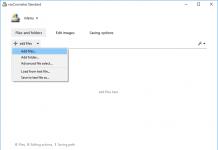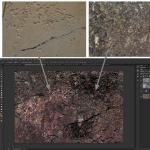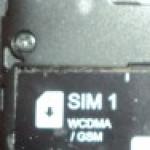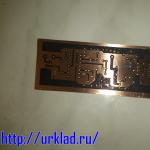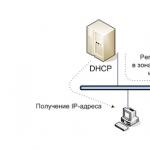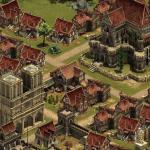TIFF (Tagged Image File Format) is a file format for storing images, popular among graphic artists, the publishing industry, and both amateur and professional photographers in general.
DWG (which stands for "Drawing") is a proprietary format of AutoCAD , a program widely used for creating engineering and architectural projects. The format is also a default extension used by several other computer-aided design (CAD) pieces of software, including IntelliCAD, Caddie or DraftSight. DWG files contain complex design structures including several layers, which can be 2-dimensional or 3-dimensional.
So, how to change TIFF into DWG?
The quick and simple way to handle your files is to get a quality piece of software, such as reaConverter. Although it is fast, this software is extremely efficient in managing a wide range of conversions. As you will soon realize, reaConverter will help you avoid spending countless hours trying to figure out how to convert TIFFs. But at the same time, it will allow you to apply a wide range of editing options .
Download and Install reaConverter
reaConverter is quick to download, install and launch, and you don"t need to be an IT specialist in order to understand in a few minutes how it operates.
Install reaConverter
Load TIFF Files
Start reaConverter and load all the .tiff files you intend to convert into .dwg because, as opposed to most free online converters, reaConverter supports batch conversion. So you can save the time and energy you would lose with doing repetitive operations.
Select TIFFs from a folder or by drag-and-dropping them directly into the reaConverter window.

Choose Output Folder
Go to the Saving options tab and decide where you want to save new .dwg files. You can also spend a few more moments to apply additional editing to the images prepared for conversion.

Then pick the DWG as output format. To help you do this, a series of buttons is conveniently placed at the bottom of the reaConverter window, so you can simply press on the one you need or click Plus button to add new options.

Then simply press the Start button and your conversion will begin in no time!
Try Free Trial VersionVideo tutorial
In the graphic design, photography, and publishing industries, TIFF is the image format of choice. TIFF is a file format used to store raster images, and TIFF images can be saved as .tiff or .tif files.
TIFF stands for Tagged Image File Format , and is seen as the go-to format for high-quality graphics. Despite its high quality, however, TIFFs have some limitations. Like all raster image files, they are hard to edit and lose quality when scaled. In order to avert these issues, users can convert their TIFF to a vector image format such as DXF .
This guide aims to provide a comprehensive overview of the TIFF to DXF conversion process.
Table of Contents
What is a TIFF file?
TIFF was created in 1986 as an attempt to create a common image file format for use with desktop scanners. Over time, TIFF evolved from a monochrome format to one which supports true color . To be technical, this means they have a 32-bit color depth , and support over 16 million colors and transparency . While the format is owned by Adobe , it is not proprietary . This means that its specification is publicly available, and the format can be used by everyone without the need to purchase a license.
TIFF is a raster graphics format . This means that it is made up of individually-colored pixels. The format is lossless , which means that a TIFF file can be edited or compressed without losing quality . For this reason, it is often used for storing large, high-quality images . For applications where image quality is of the utmost importance, TIFF is therefore the file format of choice. Meanwhile, you’re likely to run into issues when due to that format’s low resolution.
Despite the many advantages of using TIFFs, there are also some downsides. The high quality of the image comes with a file size to match: the file size of a compressed TIFF may be over 50 times larger than an equivalent JPEG. In addition, most web browsers do not support TIFFs .
What is a DXF file?
Is a vector graphics format primarily used in computer-aided design. It was created by Autodesk to serve as an exchange medium between different CAD programs – DXF stands for D rawing Ex change F ormat.
Unlike , which was also created by Autodesk, DXF is not a proprietary file format. As a result, it is supported by almost all CAD programs on the market. You can using a range of programs, including AutoCAD, Adobe Illustrator, and, of course, . This wide support means that DXF is the industry’s format of choice for collaborative editing.
While raster images have to store color information for every single pixel, a DXF only stores the necessary information to produce the lines and text in the image. This means that the file size of a DXF image will usually be much smaller than its raster equivalent . DXFs are, however, usually larger than DWGs. This is because DWGs are binary files, whereas DXFs are made up of ASCII text.
Why convert from TIFF to DXF?
Whilst TIFF is the gold standard for storing high-quality images, it still has some drawbacks. As a raster image format, TIFF faces the some of the same issues as other formats, such as PNG or JPEG . A TIFF file is made up of pixels, which means that entities within the image cannot be easily edited. Raster images have no structure , so it is impossible to separate out an individual line or piece of text. Any edits you make will therefore affect the entire image . It is also difficult to zoom into or scale the image without it becoming pixelated .
 |
 |
Vector graphics formats like DXF avoid these problems. One of the to is that vector files are easily editable and endlessly scalable . Entities within a DXF can be edited individually, and the image can be scaled without loss of fidelity. In addition, DXF also has advantages over other vector formats . Using DXF means that you can be sure that your file will be supported by whichever CAD package you use. This stands in contrast to , which is unsupported by some CAD programs. As DXF is so widely supported, it’s the perfect format for and collaboration .
Interested in converting to DWG instead? Learn how to convert from in our ultimate guide.
When would TIFF to DXF conversion be used?
TIFF images are widely used in the graphic design, engineering and publishing industries thanks to their high quality and lossless compression . However, TIFF is unsuitable for some design purposes, notably those involving printing .
Printers generally use a much higher resolution than computer screens. A printer typically uses 600 dots per inch whereas computer screens use around 72 dots per inch. Therefore, an image that looks fine on screen may have too low a resolution for printing. As a result, it may end up looking grainy or pixelated when printed. With vector images, this problem is eliminated, because there are no pixels to worry about . When you print a vector image, it will appear crisp at any size .
Some of the most common graphic design applications for vector images include:
- Sign making
- Fabric printing
- Embroidery
- Animations
- General graphic design (e.g. magazines)

Vector graphics are commonly used for signs, such as these airport signs, as they retain their quality at any scale and are easily replicable
Even outside of these fields, Scan2CAD for optimal results. This is because TIFF preserves image quality, whereas JPEGs degrade upon compression, leaving the image with artifacts.
Case study: Facilities management
One example of TIFF to DXF conversion comes from the field of facilities management . A leading US insurance company was initially attracted to Scan2CAD for its editing prowess, rather than its vectorization capabilities. However, the usefulness of being able to convert from TIFF to DXF soon became apparent for the company. The company regularly handles paper drawings, which can be scanned and saved as TIFF files. Some parts of these drawings – such as fire equipment, sprinkler systems, power points, and hazards – must be converted into a vector format so that they can be edited in the company’s in-house CAD program. Scan2CAD enables the scanned TIFFs to be converted to DXF quickly and simply.
The company’s CAD supervisor writes: “I received a color PDF from a client. As it was PDF’d directly from CAD it was of very good quality. When I saved it as TIFF within Acrobat it resulted in a 363 Mb file at 200 dpi. Scan2CAD was able to open the TIFF and reduce the colors from 16.7 million to 8 in a few minutes. I then used the View/Edit Palette feature to ensure that some of the lighter colors that needed to be saved were converted to black. Then I reduced the color depth to 1-bit. I selected the Site Plan option under Type, tweaked a couple of settings, hit the VEC button and had a near perfect vector translation in a few seconds. My guess is that we reduced the total project time by nearly a day on something that would normally take about 32 hours to create from scratch “.
You can read the , or visit our for more examples of how conversion helps businesses.
Should I use an online converter?
The short answer here is no .
When comparing an online TIFF to DXF converter to a local application that runs on your PC, such as Scan2CAD, there’s simply no competition. Scan2CAD is faster , more efficient and more accurate than any online conversion tool on the market.
Vectorization is an incredibly complex process from a technical standpoint. This means that it requires plenty of computer processing power to complete a conversion from raster to vector.
For a local application, this isn’t a problem-but online converters have stretched resources, and can’t devote the same amount of computing power. So, they cut corners, and convert your image in a simplistic manner. They are unlikely to properly capture the detail in your TIFF file, leaving you with a DXF file that’s useless for editing purposes.
Unfortunately, the don’t end there. Online converters come with a host of security and privacy risks, potentially putting your intellectual property in danger, and leaving your system open to being compromised. Choosing Scan2CAD, meanwhile, means you’re choosing a program that keeps your files 100% secure.
Keeping your files and system secure is vital. Downloading a crack could put them in danger. Find out why downloading a could harm your computer and business.
How do I convert from TIFF to DXF using Scan2CAD?
Converting from TIFF to DXF is an incredibly simple process. In just a few minutes, you can transform your TIFF into an editable vector following these easy steps:
- Load your TIFF in Scan2CAD. This is much the same as opening a file in any program. Just click File > Raster > Load , and select your image.
- Choose your settings . сайтes loaded with a range of , each of which produces optimal results for a specific type of image. Using the Type menu, select the settings most appropriate for your desired results.


DWG (Drawing) является собственным форматом AutoCAD, программы широко используемой при создании инженерных и архитектурных проектов. По умолчанию этот формат используется и в некоторых других автоматизированных системах проектирования (CAD), в том числе IntelliCAD, Caddie и DraftSight. DWG-файлы содержат сложные дизайнерские структуры, включающие по несколько слоев, что могут быть двухмерными или трехмерными структурами.
TIFF — формат для хранения файлов изображений, получивших широкое распространение в среде художников-графиков, в издательской индустрии. Также он получил распространение в среде любителей и профессионалов-фотографов.
Как конвертировать DWG в TIFF?
Самый простой способ — это скачать хорошую программу конвертации, например Фотоконвертер. Он работает быстро и эффективно, позволяя конвертировать любое количество DWG файлов за раз. Вы сможете довольно быстро оценить, что Фотоконвертер способен сэкономить массу времени которое вы будете тратить при работе вручную.
Скачайте и установите Фотоконвертер
Фотоконвертер легко скачать, установить и использовать — не нужно быть специалистом в компьютерах, чтобы понять как он работает.
Добавьте DWG файлы в Фотоконвертер
Запустите Фотоконвертер и загрузите.dwg файлы, которые вы хотите конвертировать в.tiff
Вы можете выбрать DWG файлы через меню Файлы → Добавить файлы либо просто перекинуть их в окно Фотоконвертера.

Выберите место, куда сохранить полученные TIFF файлы

Выберите TIFF в качестве формата для сохранения
Для выбора TIFF в качестве формата сохранения, нажмите на иконку TIFF в нижней части экрана, либо кнопку + чтобы добавить возможность записи в этот формат.

Теперь просто нажмите кнопку Старт и конвертация начнется мгновенно, а TIFF файлы сохранятся в указанное место с нужными параметрами и эффектами.
Попробуйте бесплатную демо-версиюВидео инструкция
Интерфейс командной строки
Профессиональные пользователи могут конвертировать DWG в TIFF используя
can convert your TIFF image files to AutoCAD (DWG) format. Our manual DWG conversions are fully editable, multi-layer and 100% dimensionally accurate. We follow AIA layering standards and can also accommodate your layering standards. The final output is editable and will be in DWG format because we create the drawing as a new file. We can create as many layers as you require.
Tagged Image File Format or TIFF is a file format for mainly storing images, including photographs and line art. TIFF is a popular format for high color depth images. TIFF format is compatible with applications such as Photoshop (Adobe), GIMP, Ulead (PhotoImpact) and PaintShop Pro (Corel) and by scanning, faxing, word processing, optical character recognition, and other applications. It is because of its easy view-ability that TIF files are one of the most popular formats. However, a TIFF file is not easily editable in its original form. Solution: we can convert your TIFF files to DWG format.
Our TIFF to DWG Conversion Process
TIFF to DWG conversions are vectorized artwork that are scalable and do not get pixilated you enlarge them. You can use these DWG files for websites, brochures, catalogues, etc. As they are high in resolution, enlargement does not affect the quality or clarity of work. Some people choose to use auto-vectorization software tools, but these are not able to ensure that the dimensions written on your drawings conform to the lines drawn. Also, they cannot separate elements into different layers. On the other hand, our proprietary vectorization process enables you to convert your images into accurate and scalable vectorized artwork.
We use a combination of both manual techniques and the latest technology to make your file error free. Our clients prefer the use of manual vectorization, since old papers tend to become distorted over time. Also, the scanning process introduces additional distortion. The distortions introduced during the scanning process could result in a poor-quality conversion, especially if you just use auto-vectorization software. On the other hand, our experts can digitize your drawings according to the dimensions mentioned, giving you error-free DWG files. Moreover, we guarantee 100% accuracy in the final output.
The key advantages of our service are:
- The final output is editable and will be in DWG formats because we create the drawing as a new file.
- We can create as many levels as you require. We generate separate levels for dimensions, text, body, hidden lines, and centerlines, etc.
- Our experts can use your standards or reference file when preparing the AutoCAD files.
- Text is separated and has its own level and is recognizable as text.
- Dimensions are intact and are shown by a separate level.
- We use blocks for different entities (like doors, windows, electrical fixtures, plumbing fixtures, furniture, etc.).
Format Conversion will give you the best CAD conversion and CAD format conversions at very competitive prices. Use the form at the top of this page to submit your file and get a free quotation.
